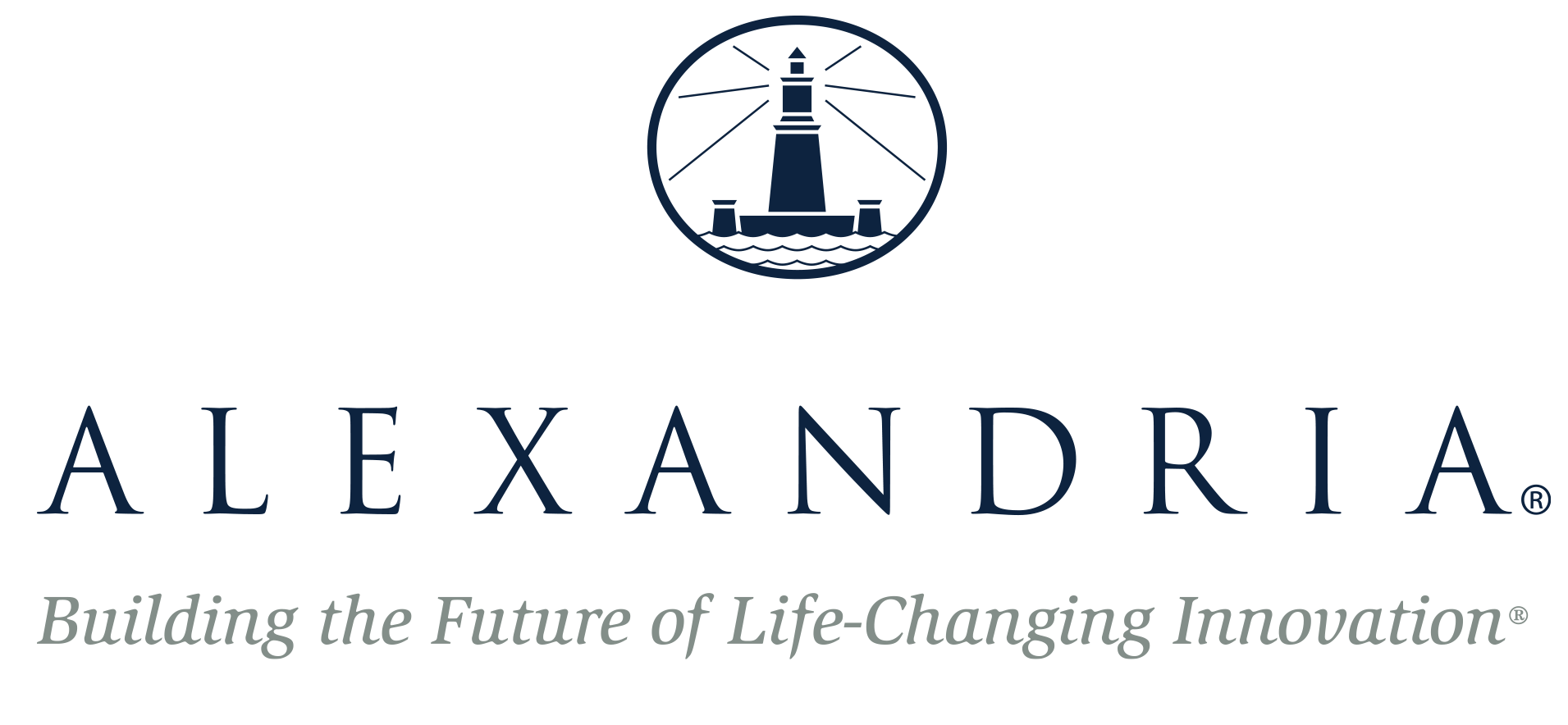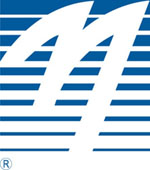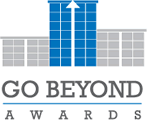
I2SL's Go Beyond Awards
Beyond Laboratories
Beyond Green
A unique awards program honoring organizations, individuals, products, and projects that are advancing sustainable, high-performance facilities.
Congratulations to the winners of I2SL's first annual Go Beyond Awards. Awards were presented at a luncheon ceremony at the Labs21 2008 Annual Conference on September 18, 2008, in San Jose, California.
Read more about the award winners in the November issue of Laboratory Design Newsletter!
Labs21 2008 Annual Conference Go Beyond Award Winners
I2SL, in partnership with R&D Magazine, is pleased to announce the first annual Go Beyond Award winners. This award program honors individuals, organizations, projects, and laboratory manufacturers that “go beyond” the status quo to minimize the environmental impacts of laboratory and other high-technology facilities and laboratory equipment. Award winners have shown their commitment to the goals of Laboratories for the 21st Century (Labs21®) and that excellence in sustainability means going beyond the laboratory, beyond the United States, and beyond being “green” when considering building projects, products, and services. The first annual Go Beyond Awards recognized the following outstanding individuals and organizations:
INDIVIDUAL AWARD WINNER
 |
Karl Brown accepts his award at the
Labs21 Luncheon. |
Karl Brown, California Institute for Energy and Environment, University of California (UC)
Karl Brown has been a leading advocate of laboratory sustainability in the UC and California State University (CSU) systems, establishing models for universities and laboratories across the country. Karl's original involvement with Labs21 was in developing the Labs21 Pilot Partnership for UC Merced.
He is responsible for the requirement that all UC lab buildings meet the Labs21 Environmental Performance Criteria. He also played an important role in leading UC to adopt its award-winning Policy on Sustainable Practices in 2003.
Karl co-developed the energy efficiency partnership between UC, CSU, and the four investor-owned utilities in California, and ensured that the program included an educational component. Since 2004, the partnership has organized nine Labs21 workshops for 300 staff from 33 campuses.
Karl also developed the “Monitoring-Based Commissioning” program of the UC/CSU/Investor Owned Utility Energy Efficiency Partnership, a pioneering approach to utilizing energy efficiency incentive funding to install ongoing sub-metering and monitoring systems to ensure continued high performance of buildings, including many laboratories. Since 2004, this partnership has funded more than 150 energy efficiency projects in the UC system, reducing the University's annual energy consumption by more than 4.8 million therms and almost 70 million kilowatt hours.
Karl has given multiple presentations promoting the Labs21 approach at the annual conference and elsewhere. He has repeatedly argued against the prevailing wisdom that laboratories cannot be energy efficient, ensuring that UC lab buildings are not exempted from, but rather central to, sustainability policies.
Individual Honorable Mention
 |
Peter Rumsey shakes hands with Will
Lintner, DOE, as he accepts his award |
Peter Rumsey, Rumsey Engineers
In the past decade, Peter and Rumsey Engineers have been responsible for many key innovations in energy-efficient design and analysis. They have pioneered the use of a variety of system types in U.S. laboratories, including chilled beams, efficient outside air systems that eliminate reheat, radiant cooling systems, and low pressure drop systems.
Recent and current Rumsey Engineers projects include the first commercial zero carbon commercial building in the United States; a 35 megawatt data center, which will be the most energy-efficient data center in the country; San Francisco's Exploratorium science museum; a new supercomputer facility at the University of California at San Diego; and the Center for Sciences at California Polytechnic State University.
Peter, a Labs21 instructor, promotes Labs21 goals in his column on GreenerComputing.com, in articles for a variety of other publications, and in presentations at industry events and seminars, including the Labs21 Annual Conference.
Visit the Rumsey Engineers website to learn more about Peter and his projects.
Individual Honorable Mention
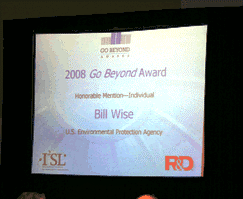 |
Since Bill Wise was unable to attend
the conference, Karen Murray, EPA, accepted the award on his behalf.
|
Bill Wise, EPA
In 1996, Bill Wise played an integral role in the EPA planning group which planned, implemented, and completed the first federal energy savings performance contract (ESPC). The first ESPC took aggressive measures to upgrade the failing, energy-and-water-wasteful HVAC system of EPA's Ann Arbor, Michigan, National Vehicle and Fuel Emissions Laboratory. This upgrade achieved energy reductions of 50 percent and water reductions of 75 percent, and was the inspiration for the creation of the Labs21 program.
Bill also implemented a second ESPC contract for an EPA laboratory in Oklahoma, which has now become a low carbon emissions facility because of its use of ground source heat pumping, energy-efficient upgrades, and green energy purchases. Bill's efforts have resulted in savings of more than 17 billion Btu and nearly 3.5 million gallons of water, as well as more than $106,000 in energy savings.
Learn about ways Bill's home office in Cincinnati, Ohio, is contributing to greening EPA.
ORGANIZATION AWARD WINNER
 |
Allen Doyle, LabRATS founder, and Sonam
Gill accepted the award for their program |
Laboratory Research and Technical Staff (LabRATS), University of California at Santa Barbara
The LabRATS program at the University of California at Santa Barbara (UCSB) focuses on helping researchers conserve resources in the workplace. LabRATS consists of co-founders Katie Maynard and Allen Doyle and several UC interns.
LabRATS have promoted the Labs21 principles in several capacities at the University of California, including presenting to six departments at UCSB. Presentations were given to deans, department heads, and associate vice chancellors.
LabRATS promotional programs include information on hood deactivation and sash closure, mercury thermometer exchange, green chemistry, zone lighting, water conservation and surplus equipment distribution.
LabRATS has grown into 10 separate initiatives in just two years. One of these initiatives, Laboratory Assessments for Research Sustainability, comprehensively evaluates the resource usage and behavior of researchers, administration, and support staff.
Following these evaluations, LabRATS provides assessments on performance, which include a slide show highlighting best practices already followed by the researchers, as well as opportunities for conservation. LabRATS have assessed at least 35 laboratories in two years.
The assessment and conservation program was featured in the journal Science in October 2007, for its innovation and findings of the conflicting incentives faced by researchers.
In addition to helping promote the Labs21 message at various events throughout the year, LabRATS also promotes conservation practices through its websites.
Read the UCSB press release on the LabRATS Go Beyond Award.
Organization Honorable Mention
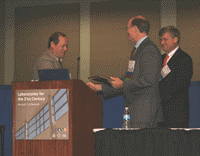 |
University of California's award is
accepted by Dirk van Ulden |
University of California
The University of California (UC) has long been a leading owner in the Labs21 community, promulgating Labs21 principles to a wide university and college audience. UC adopted a strong, student-driven and staff-supported sustainability policy, which requires that all new laboratory construction projects reference Labs21 and use the environmental EPC as a rating scorecard.
Exemplary new lab designs on many campuses are LEED Gold or higher and two facilities are LEED platinum, the UC Santa Barbara, and the UC Davis Sierra Nevada facility, which was a Labs21 Partner project. Other Labs21 Partners at UC include pilot partner UC Merced, Berkeley, Santa Cruz, Davis, and San Francisco.
Additionally, the University has offered nine Labs21 Workshops since 2004, with 300 total UC and CSU staff participating, and has had several staff sign on to be registered Labs21 instructors.
UC sponsors an annual sustainability conference at which Labs21 is often featured in session topics and post conference workshops.
Learn more about UC's sustainability policies and best practices.
PROJECT—NEW CONSTRUCTION AWARD WINNER
 |
Northern Arizona University's award
was accepted by Richard Baron |
Northern Arizona University Applied Research and Development Facility
The new Northern Arizona University Applied Research and Development (ARD) facility's hallmark accomplishment is an awareness of and attention to issues centered on energy and water. The ARD facility, which houses BSL-2 and BSL-3 laboratory areas, offices, and support spaces, earned LEED Platinum certification, receiving an impressive 60 points out of a possible 69.
The Labs21 EPC and guidance notes informed the development of the 65,000-gross-square-foot facility, specifically in application of low-pressure air supply, energy recovery, and daylighting.
A high performance envelope, an application of adaptive comfort theory and reduced installed heat gain, reduces building load. The envelope incorporates southern orientation; extra insulation; high-performance, spectrally selective glazing; shaded windows; and triple pane glazing.
The building's passive design strategies focused on appropriate orientation, solar control, thermal mass with night flushing, daylighting, and natural ventilation.
Efficient active strategies include low-pressure air distribution, demand controlled ventilation, condensing boilers, displacement supply, radiant cool/warm floors, evaporative chiller, and daylight harvesting.
Energy that is used in the building laboratory and office areas is recovered through an evaporatively cooled air-to-air heat pipe and, in non-lab areas, recirculation.
The team provided site generation technologies through the incorporation of 160 kilowatts of photovoltaic and 600 square feet of solar hot water.
Project—New Construction Honorable Mention
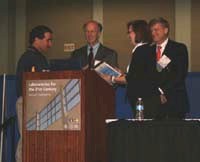 |
University of California at Merced's
Honorable Mention Go Beyond award was accepted by Kevin
Creed |
Science and Engineering I Building at the University of California at Merced
The Science and Engineering I Building is a 205,000-gross-square-foot academic laboratory, the first of three academic buildings constructed for the opening of the campus in 2005.
The design of this building exceeded aggressive planning goals, targeting a minimum LEED Silver rating, and estimating performance beyond the 80 percent benchmark goal.
Among the most innovative design features are a four-pipe thermal distribution system to minimize simultaneous heating and cooling, the maximum likely load method for HVAC system sizing, and benchmark performance, target-based design.
UC Merced is a Labs21 Pilot Partner, and Labs21 team assistance was employed during the design of this facility.
EQUIPMENT MANUFACTURER AWARD WINNER
 |
Robert Deluca shakes hands with Joe
Phillips as he accepts Lab Crafters' award |
Lab Crafters, Inc.
Lab Crafters have been a fixture at the Labs21 Annual Conference and Technology and Services Fairs for years. Their manufacturing processes and office protocols are all developed with the Labs21 concept in mind.
Lab Crafters manufactures the Air Sentry high performance fume hood. The Air Sentry was introduced in 1997 as the first high-performance, high-efficiency fume hood to reach the lab market. The Air Sentry fume hood consumes up to 50 percent less conditioned laboratory air than traditional fume hood designs, while providing a safer operating environment for the user, as demonstrated by the fume hood's 110 test results from ASHRAE.
Lab Crafters' latest product, the Air Infinity ventilated lab bench, is manufactured with recycled steel content and finished with non-volatile-organic-compound-emitting coatings. The Air Infinity's low operating airflow requirements, compared with traditional laboratory fume hoods, can save on operating costs and can earn points toward LEED certification.
To help educate those engaged in developing or maintaining high-tech facilities, Lab Crafters developed a presentation called "Fume Hoods 101," which explains the environmental impact of traditional fume hoods and how high performance fume hoods, such as the Air Sentry, are energy-efficient and environmentally responsible alternatives.
Learn
more about Lab Crafters and the organizations various sustainability efforts.
The 2008 Go Beyond Awards Luncheon
was sponsored by
Grumman/Butkus Associates
Back to Go Beyond Awards Index

